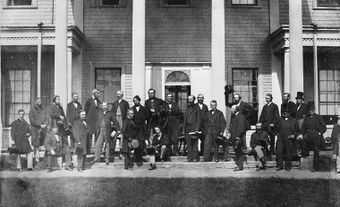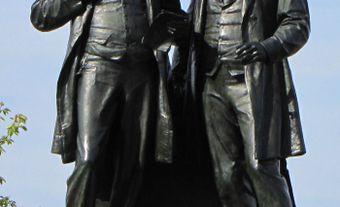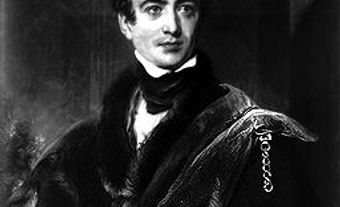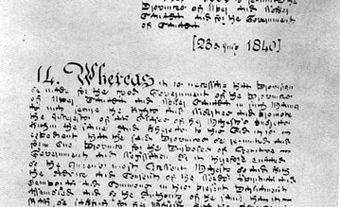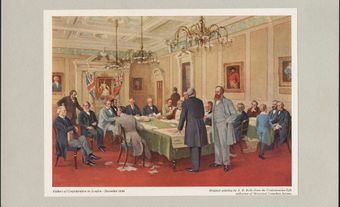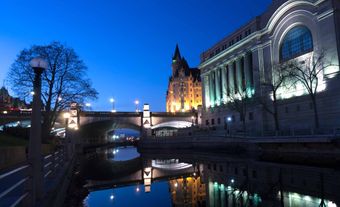![The province of Canada [cartographic material] The province of Canada [cartographic material]](https://d3d0lqu00lnqvz.cloudfront.net/media/media/bf6a8447-8306-4749-bb63-2f6129eb20a6.jpg)
Province of Canada
Rep by Pop first arose as an issue prior to 1841. It came up during the debate over whether to unite Upper and Lower Canada under a single government. (See also: Durham Report.) According to the eventual terms of the Act of Union, the two parts of what became the Province of Canada would be represented in the legislature by an equal number of representatives. This was in spite of the fact that Canada East (formerly Lower Canada; present-day Quebec) had 59 per cent of the population. Canada West (formerly Upper Canada; present-day Ontario) had 41 per cent. This meant English-speaking Canadians were overrepresented in the legislature.
The arrangement of equal seats for the two Canadas was called “sectional equality.” It was acceptable to the mostly English-speaking and Protestant population of Canada West. They felt they needed a legislative safeguard against the more populous Canada East. They had long-standing feelings of mistrust and prejudice toward the largely Roman Catholic, French-speaking Canadiens and believed a Roman Catholic “priestocracy” in that colony wielded too much political influence. The goal was to assimilate French Canadians to English Canadian culture and norms.
Sectional equality drew protests from politicians in Canada East. They argued that it left them powerless in the new legislature, and they resented the attempt to assimilate them. They were the first to demand Rep by Pop.
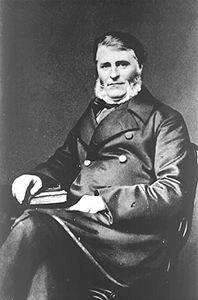
Francis Hincks and George Brown
A decade later, the census of 1851 revealed that immigration, primarily from the British Isles, had made Canada West more populous than Canada East. The situation was now reversed. It was now the French Canadians who were over-represented in the legislature. A growing number of English Canadians regarded this as unfair. However, Canada East still feared domination by Canada West, since it was the preferred destination of most immigrants.
French Canadians in Canada East now wished to retain sectional equality. They had a spokesman in Francis Hincks, a moderate Reformer. He believed that Anglo-French political relationships and alliances required trust, which had to be based on equality. To give either side more influence in the legislature, he said, could destroy trust in the Union itself.
Fellow Reformer George Brown, from Canada West, considered Hincks a sellout for supporting sectional equality. Brown had become a passionate supporter of Rep by Pop as Canada West grew in population and prosperity. He believed most of Canada West’s voters shared his view. He resented what he called “French domination” of the Province of Canada. He was angered by politicians from Canada West whose alliances with those in Canada East kept sectional equality alive.
The debate over Rep by Pop and sectional equality continued for 10 years. It constantly threatened the viability of the Union. More radical reformers, whom Brown called “Clear Grits,” were ready to sacrifice the Union in their quest for Rep by Pop. But Brown wanted the Union remade, not destroyed.

Macdonald and Cartier
George-Étienne Cartier, leader of the conservative Parti bleu in Canada East, opposed Rep by Pop. In 1864, Conservatives in Canada West under John A. Macdonald formed a great coalition with Cartier. With the help of moderate Reformers such as Hincks, the coalition was able to hold onto power in the legislature. This was in spite of Brown’s widespread popular support in Canada West.
However, it soon became clear to Macdonald, Cartier, Brown and other leaders that a compromise between the two sides would be necessary if their mutual goal of Confederation was to become a reality.
Rep by Pop and Confederation
Several political conferences were held to discuss the possibility of Confederation. (See also: Quebec Conference; Charlottetown Conference; London Conference.) They were attended by delegates from the Province of Canada, Prince Edward Island, Newfoundland, New Brunswick and Nova Scotia. Rep by Pop was once again a hotly debated issue. The Maritime provinces, with their relatively small populations, were aware that Rep by Pop was inevitable in any federal assembly. They realized that sectional equality with the much larger Canadian provinces would be unmanageable. New Brunswick and Nova Scotia were afraid that their influence in the new government would be minimal. So, they campaigned for some form of balance.
The delegates reached a solution. The federal Parliament would be composed of two houses. The lower house, or House of Commons, would consist of elected members. They would represent their provinces according to population. There would be 82 seats for Ontario, 65 for Quebec, 19 for Nova Scotia and 15 for New Brunswick. The upper house, the Senate, would consist of 72 non-elected members. Each of the three regions — Ontario, Quebec and the Maritimes — would hold 24 seats. Under section 51 of the British North America Act, the number of seats allocated to each province would be recalculated after each 10-year census. (See also: Redistribution of Federal Electoral Districts.)

 Share on Facebook
Share on Facebook Share on X
Share on X Share by Email
Share by Email Share on Google Classroom
Share on Google Classroom

